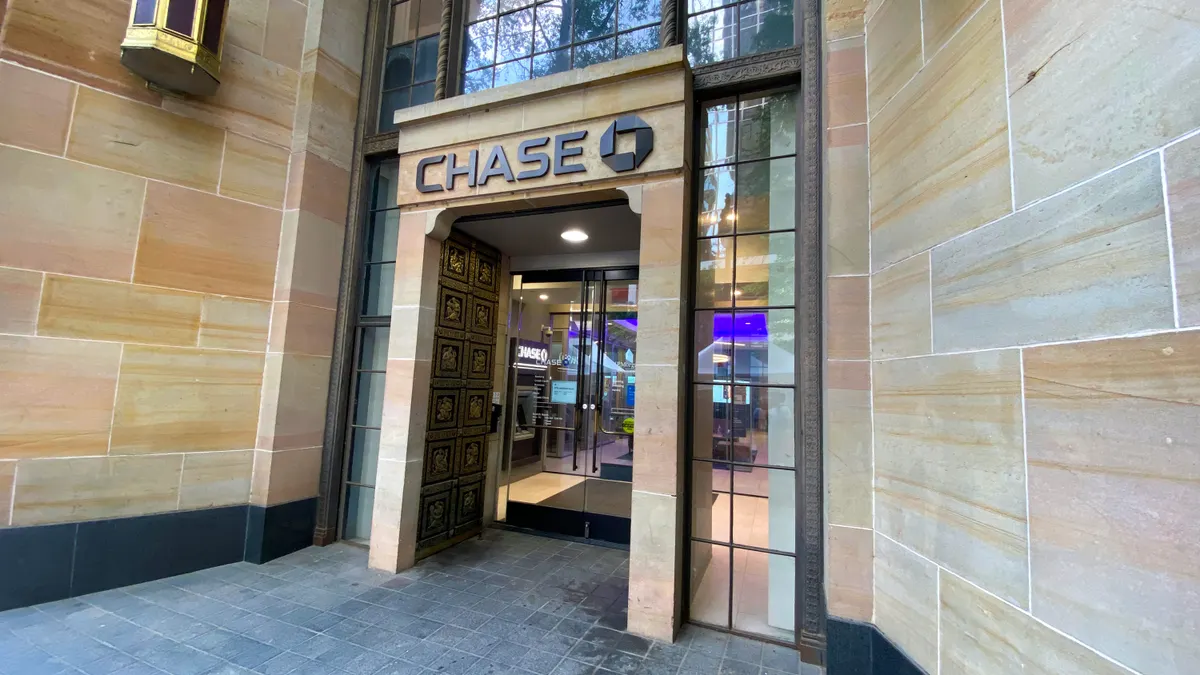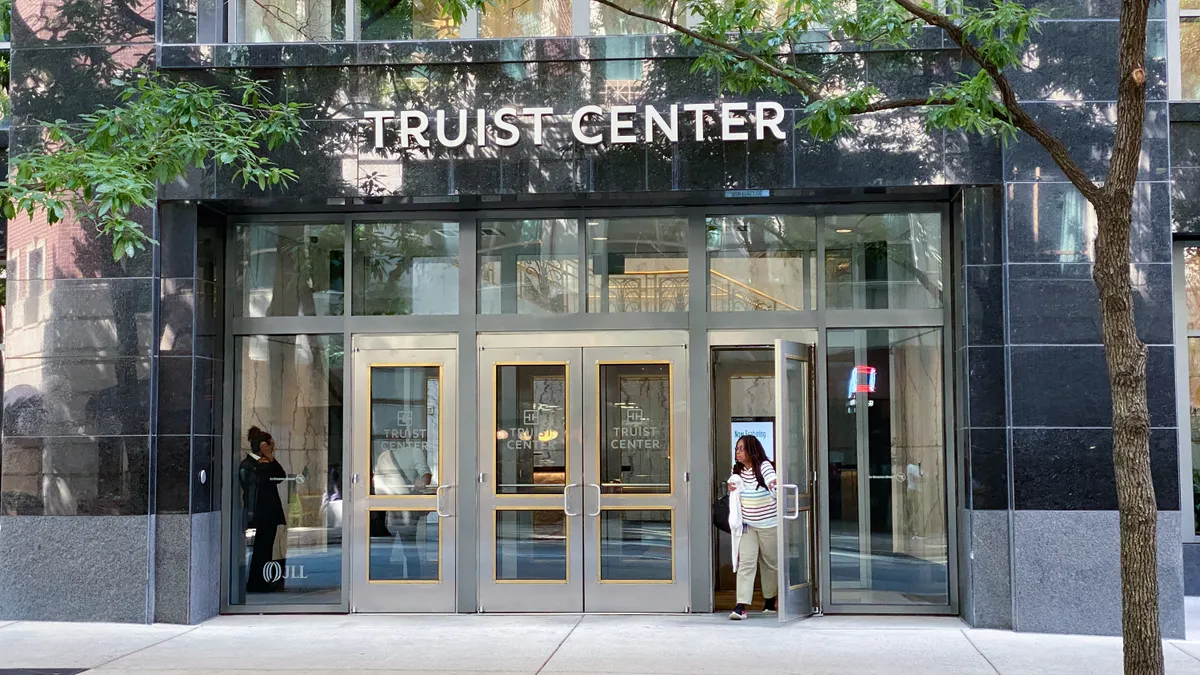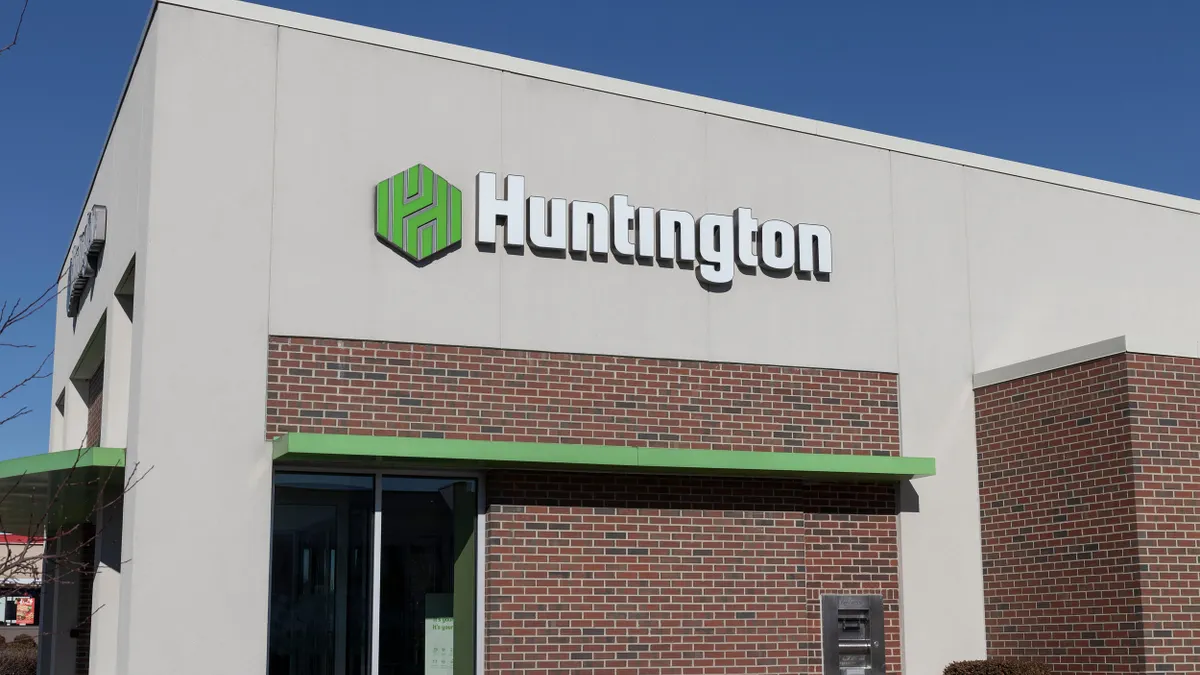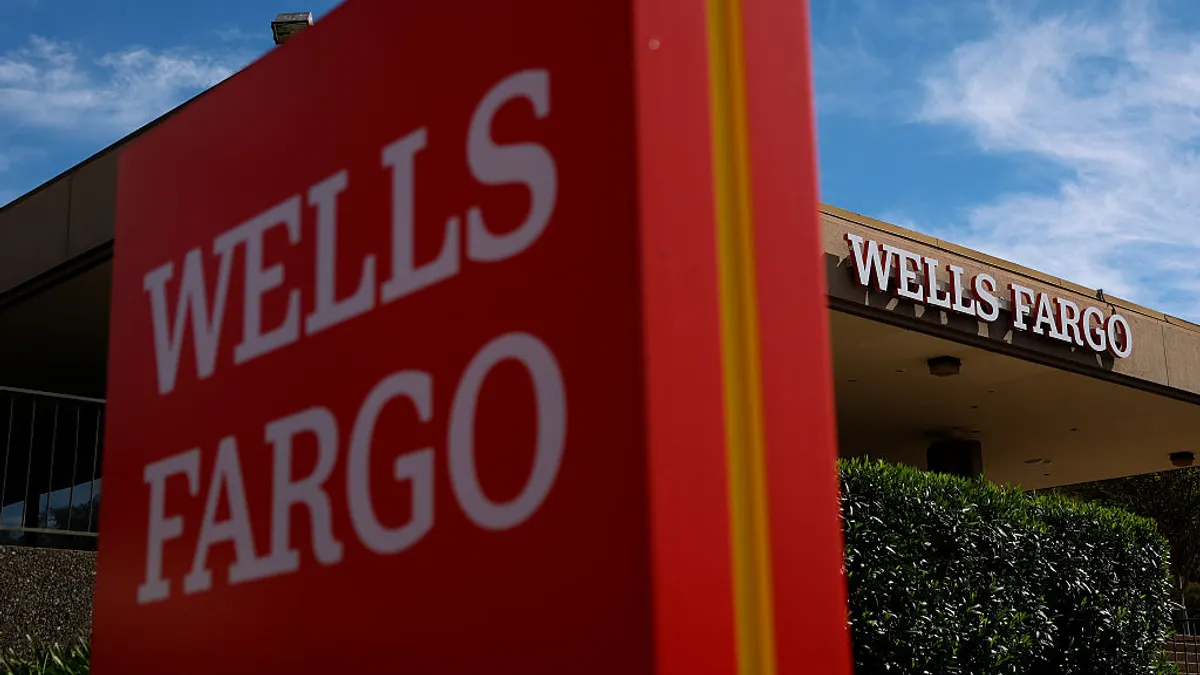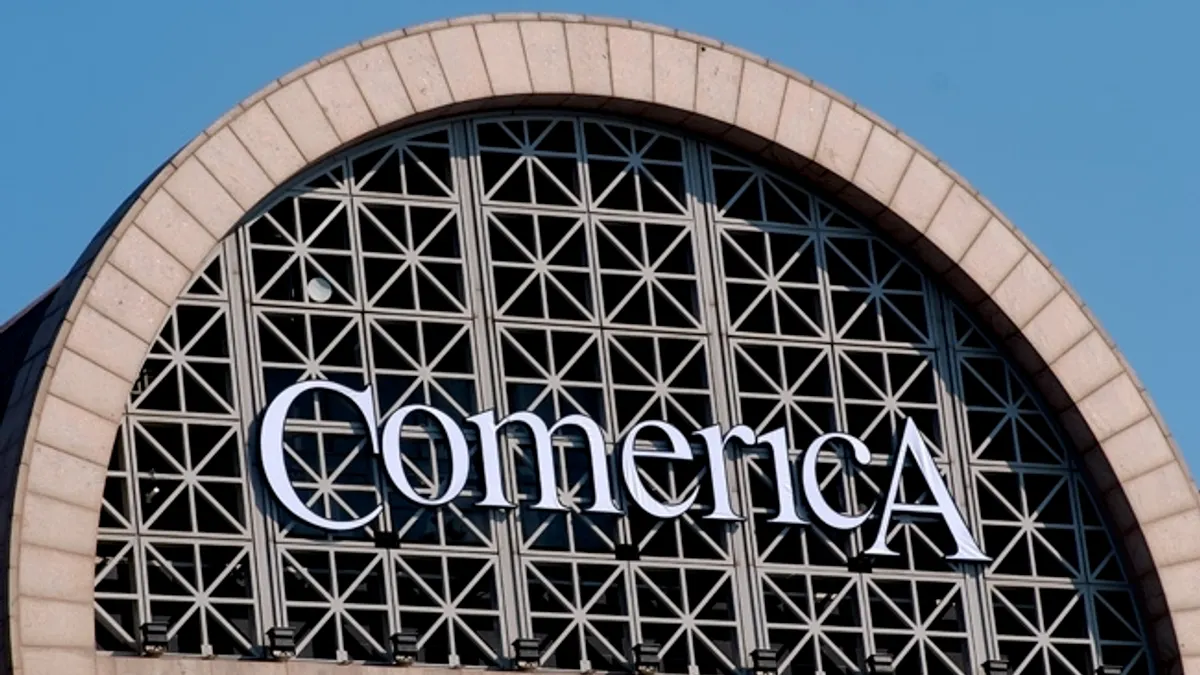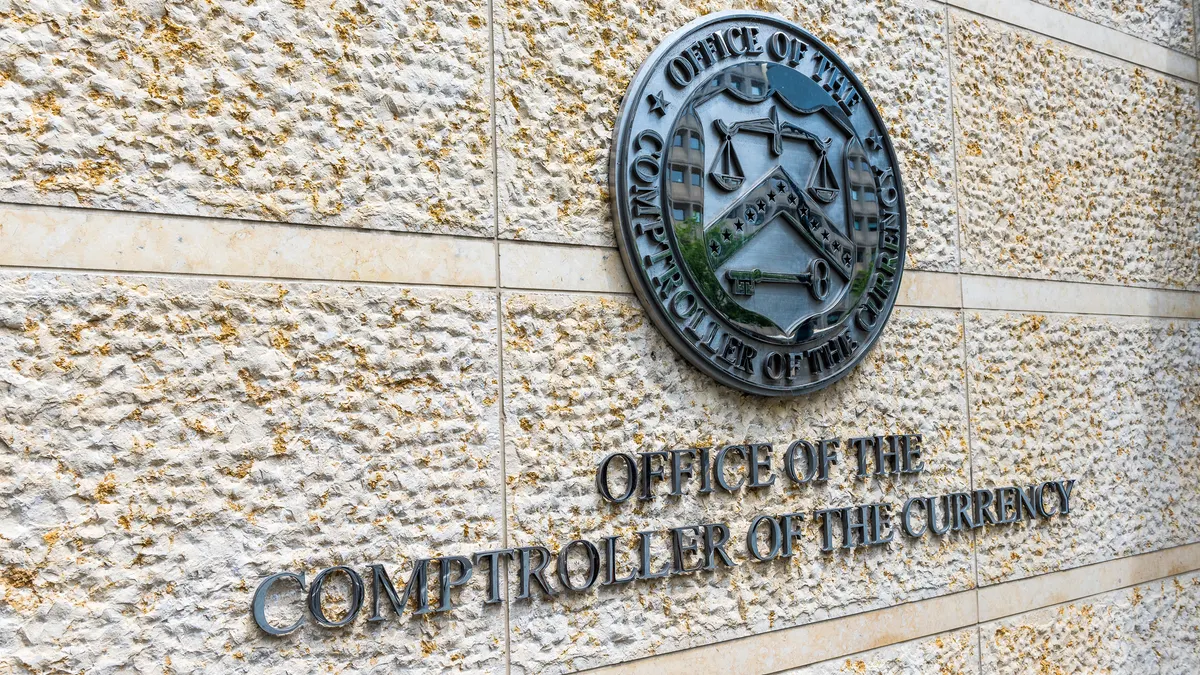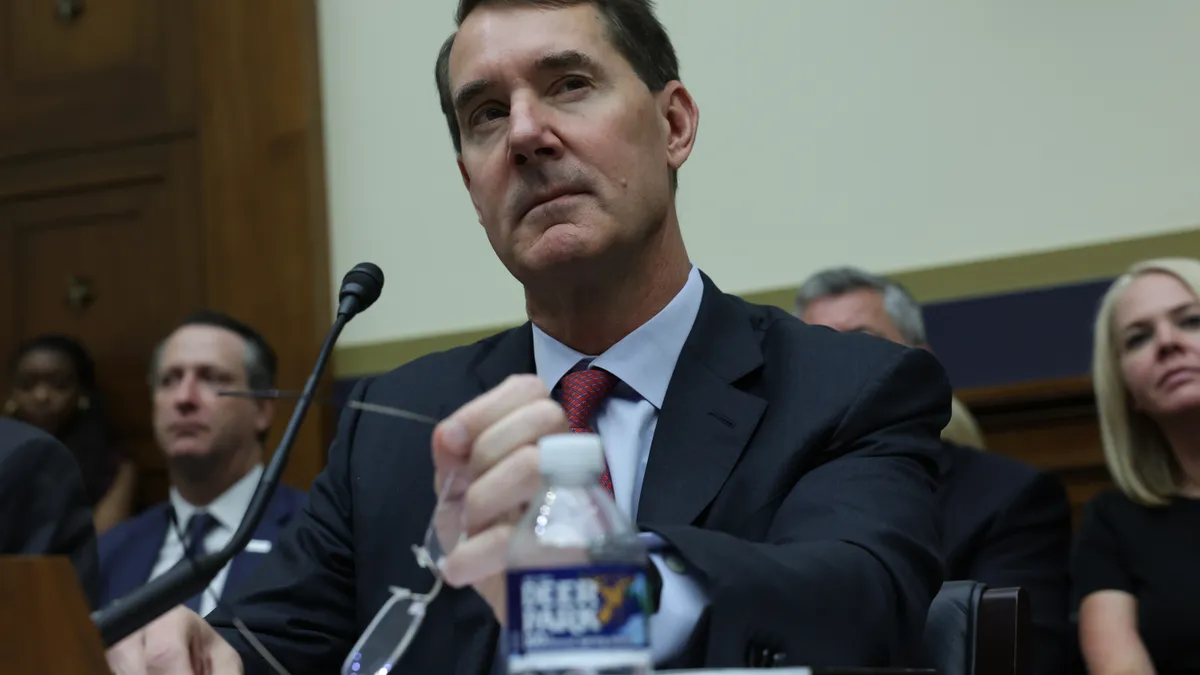JPMorgan Chase is taking a bit-by-bit approach with its branch expansion plans in certain regions of the country, as it continues its quest of capturing 15% of U.S. consumer deposits.
Being too aggressive with any strategy carries inherent risk, said Billy Botsakos, JPMorgan Chase’s consumer banking lead for the Southeast. “When we look at stuff, let’s make sure that we’re biting it off in small bites,” he said.
With branch openings, that means the biggest U.S. bank won’t open 50 locations in a state all at once, but rather two or three at a time, to ensure it’s keeping customers top of mind and making tweaks if needed, he said.

The New York City-based bank has about 5,000 branches spread across the lower 48 states, it said, adding that nearly 1 million clients a day visit the bank’s branches.
The bank is spending billions of dollars to open about 500 branches – around Boston, Charlotte, Minneapolis, Philadelphia and the Washington, D.C., area – and hire 3,500 employees by early 2027. A spokesperson declined to share a projected branch total following the expansion push. JPMorgan has a little over 11% of U.S. consumer deposits.
The lender is intent on shortening drive times to branches and being easily accessible to clients, chasing a goal of being within an hour’s drive of 75% of its U.S. customers, Botsakos said. Today, that figure is 68%.
Despite the popularity of online banking, “a lot of our clients want to get to know their bankers, have that trusted relationship live,” Botsakos said in a recent interview. “Branches are critically important to our clients right now.”
To execute its strategy around that drive time goal and increase convenience for clients, “we have to go in places that we’re currently not,” Botsakos said.
That includes the bank setting up shop in communities and locations “that our clients are asking us for, that our research is telling us that we need to be in, that our own employees are telling us that customers are asking for,” he said.
Botsakos declined to detail prospective cities or metro areas on a national scope, but listed areas of further opportunity within his Southeast region, which includes North and South Carolina, Tennessee, Alabama and Mississippi. Ongoing expansion efforts there are “representative of where we are in the rest of the country,” he said.
Those include the west side of Charlotte, where the bank has no presence. Elsewhere in North Carolina, Chase has opened branches in Winston-Salem and has plans for more there, as well as in nearby Greensboro. Chase also seeks to add more in Raleigh and its suburbs, as well as in the Wilmington area on the state’s coast.
In South Carolina, Botsakos flagged the outskirts of Myrtle Beach, where the bank has a presence already, and in Hilton Head and its surrounding area, where it doesn’t yet.
To assess where else the bank needs to be, JPMorgan Chase reviews data that reveals client migration patterns and relies on input from locally hired staff, who know the areas, Botsakos said.
The lender is gunning to both keep existing customers after they’ve moved and acquire new customers in those fresh locations, he said. In Charlotte, for example, it’s become apparent many customers have come from regions with existing Chase locations, so the brand “doesn’t necessarily need a whole lot of explanation,” he noted.
“In many cases, we’re not necessarily new to that client, we’re just new to the area,” he said.
The Southeast has been an area of particular focus for top-20 bank expansion, as population and business growth in the region soars. That includes branch openings and renovations by those based in the area (Truist) and those not (U.S. Bank, PNC, Fifth Third, Huntington).
JPMorgan Chase is “not necessarily concerned about what a competitor is doing,” Botsakos said, and instead focuses on “what can we do and how do we challenge ourselves.”
That involves keeping close tabs on what clients need, what the bank can do better and how it can stay relevant, he said, adding that JPMorgan Chase wants to be considered an advice center for customers.
JPMorgan’s 1,000th branch since it launched its 2018 expansion push opened in Charlotte in July. About 20% of the bank’s branch network is less than 10 years old.
The lender’s branch investments “pretty consistently break even in less than four years, with new branches and advisers making meaningful contributions to deposits and investment gains,” Marianne Lake, JPMorgan’s CEO of consumer and community banking, said during the company’s May investor day.
Although there’s some degree of advertisement that comes from a bank branch presence in a community, that’s not JPMorgan’s primary focus, Botsakos noted. The branch expansion is a long-term play and an investment in communities, he said.
Botsakos, who relocated to Charlotte from New York about a year and a half ago, said JPMorgan is resonating with customers in an intensely competitive Southern landscape because the lender seeks to build relationships, avoid making assumptions about client needs, and go out of its way to accommodate customers.
“It’s one thing to say it; it’s another for a client to experience it and see that we’re there for them,” he said. He referred to asking branch teams to make a point to open doors early – say, 8:50 a.m. instead of waiting until 9 a.m. – and staying open until 5:10 p.m. rather than closing right at 5 p.m.
That’s reflective, he said, of JPMorgan’s aim to earn customers’ trust over time.
“That’s what we do really, really well in our communities that we serve,” he said. A relentless client focus is “what has made us as competitive as we are, that's given us the success that we’ve had.”


